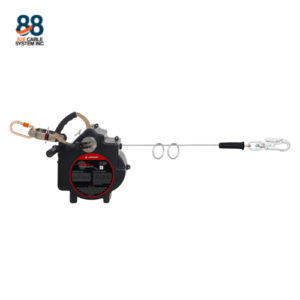Ensuring workplace safety, especially in environments with elevated work areas, is crucial for preventing accidents and protecting workers. Temporary lifelines play a significant role in this, providing essential fall protection when working at heights. In this blog, we’ll explore the regulations and standards governing temporary lifelines in the Philippines, emphasizing the importance of compliance to safeguard workers and avoid potential legal issues.
The Role of Temporary Lifelines
Temporary lifelines are crucial for protecting workers exposed to fall hazards. These systems provide a secure anchor point for fall arrest devices, ensuring workers have reliable protection when accessing elevated areas temporarily. Commonly used in construction sites, bridge work, and structural steel erection, temporary lifelines help prevent serious injuries and fatalities. Their use is essential in creating a safer working environment, especially in high-risk situations.
Key Regulations Governing Temporary Lifelines in the Philippines
In the Philippines, safety regulations for temporary lifelines are primarily guided by the Occupational Safety and Health Standards (OSHS). These standards align closely with international guidelines to ensure comprehensive fall protection. Key regulations include:
Compliance with OSHS: Temporary lifeline systems must adhere to the OSHS requirements, ensuring that they provide adequate protection for workers at heights. This includes proper installation and maintenance to prevent falls and accidents.
Local Standards: Specific provisions and guidelines from local regulatory bodies may also apply, emphasizing the need for businesses to be familiar with both national and regional safety requirements.
Comparison with International Standards: While OSHS guidelines are in line with international standards such as those set by OSHA (Occupational Safety and Health Administration), it’s essential to understand the nuances and specific requirements relevant to the Philippines.
Understanding OSHA Standards for Temporary Lifelines
OSHA standards serve as a benchmark for fall protection, including the use of temporary lifelines. Key requirements include:
Installation: Temporary horizontal lifelines must be installed according to manufacturer specifications and industry best practices. They should be positioned to minimize fall distances and ensure effective arresting capabilities.
Usage: Workers must be trained in the proper use of lifeline systems. This includes understanding how to connect to the lifeline, recognizing potential hazards, and responding to emergency situations.
Compliance: Adhering to OSHA standards helps ensure that temporary lifelines are effective and reliable, reducing the risk of falls and ensuring worker safety.
Choosing the Right Temporary Lifeline System
Selecting the appropriate temporary lifeline system depends on several factors:
Nature of Work: Consider the type of work being performed and the specific fall hazards involved. Different lifeline systems are suited for various applications, such as building construction or bridge work.
Work Environment: Evaluate the work environment, including weather conditions and the presence of obstacles. These factors can influence the choice of lifeline system and its installation.
Expert Guidance: Companies like 828 Cable System offer valuable expertise in selecting and installing Temporary lifeline Solution in the Philippines . Their knowledge ensures that businesses choose systems that meet safety standards and are suitable for their specific needs.
Installation and Maintenance of Temporary Lifelines
Proper installation and maintenance are critical for the effectiveness of temporary lifelines:
Installation Best Practices: Ensure that lifelines are installed by qualified personnel who follow manufacturer guidelines and safety standards. The system should be anchored securely and positioned to minimize potential fall distances.
Maintenance and Inspection: Regular inspections are essential to identify wear and tear, ensuring the lifeline remains in good condition. Maintenance practices should address any issues promptly to prevent failures.
Common Issues: Be aware of common issues such as improper installation or damage to components. Addressing these issues promptly helps maintain the effectiveness of the lifeline system.
Takeaway
Understanding and adhering to regulations for temporary lifelines is essential for maintaining workplace safety and avoiding legal issues. By selecting the right system, ensuring proper installation and maintenance, and complying with regulatory standards, businesses can effectively protect their workers and create a safer work environment. For expert advice and support, consider consulting with safety professionals like those at 828 Cable System to ensure your temporary lifeline solutions are effective and compliant.











